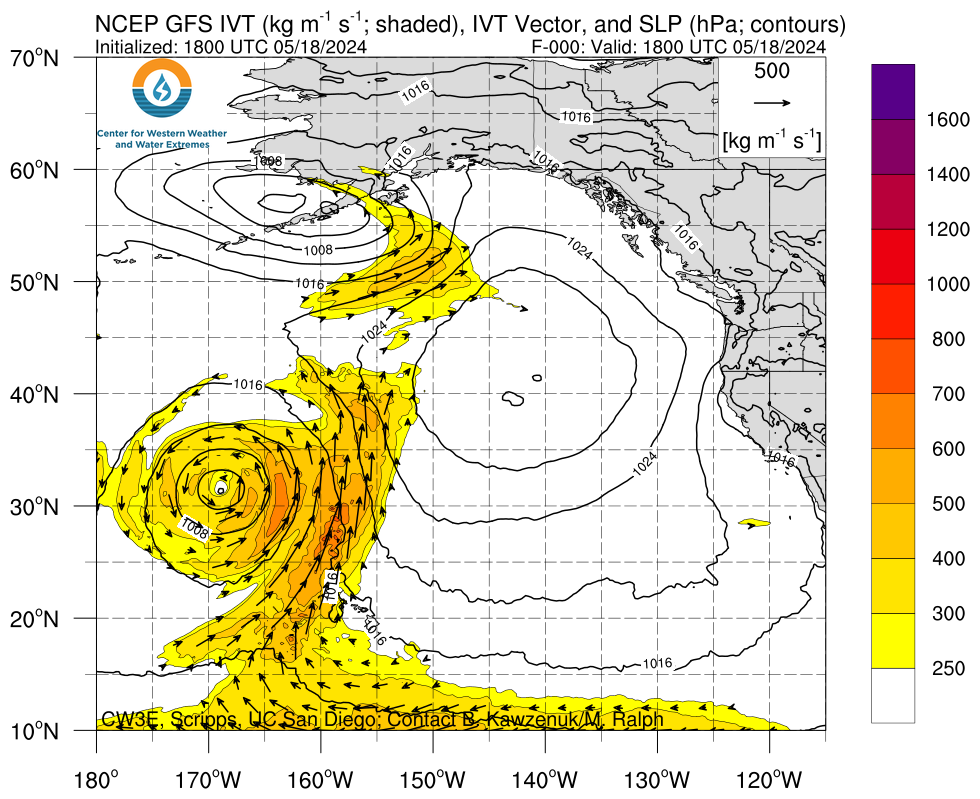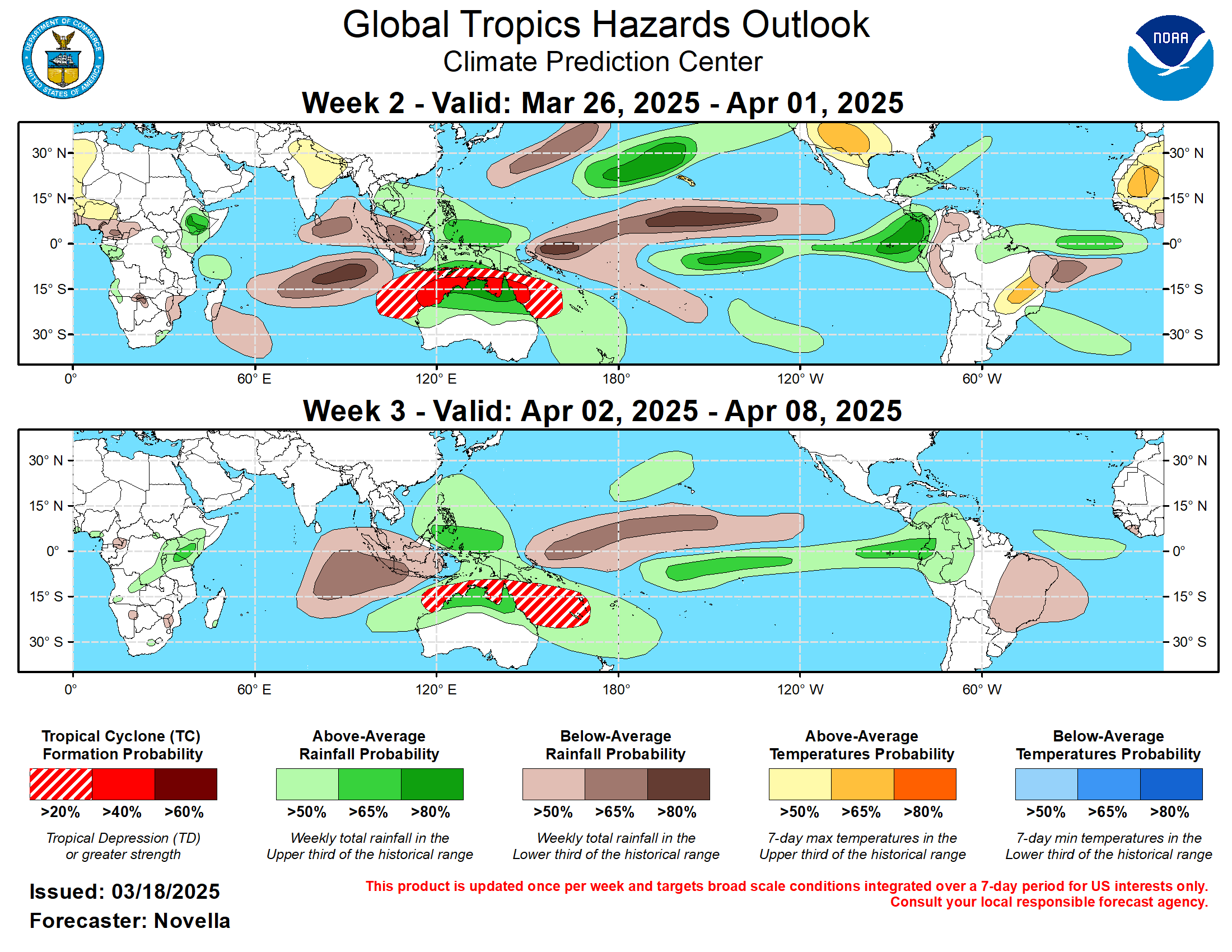This article focuses on what we are paying attention to in the next 48 to 72 hours. The article also includes weather maps for longer-term U.S. outlooks and a six-day World weather outlook which can be very useful for travelers.
First the NWS Short Range Forecast. The afternoon NWS text update can be found here but it is unlikely to have changed very much. The images in this article automatically update.
Short Range Forecast Discussion
NWS Weather Prediction Center College Park MD
Sat May 18 2024
Valid 12Z Sat May 18 2024 – 12Z Mon May 20 2024…Unsettled weather with chances for excessive rainfall and severe
thunderstorms continues across the Southeast Saturday……Severe weather potential returns to the Central Plains on Sunday…
…Sweltering heat continues across South Florida and southern Texas,
building into the southern High Plains this weekend…A wet Saturday is in store for the Southeast as an upper-level wave and
associated surface frontal system focused along the Gulf Coast lead to a
broad area of showers and thunderstorms. Rich moisture along and south of
this boundary may lead to some locally heavy downpours, with a Slight Risk
of Excessive Rainfall (level 2/4) in place for portions of southern
Alabama, southwestern Georgia, and the Florida Panhandle. An expected
round of widespread, organized thunderstorms over wet soils from storms
already occurring overnight Friday will lead to the threat of some
scattered instances of flash flooding. Some storms will also carry the
threat for damaging winds and an isolated tornado or two, with a Slight
Risk of severe weather (level 2/5) extending eastward further into
southern Georgia and northern Florida. Moderate to locally heavy rainfall
will be possible elsewhere to the north of the boundary, with a few
additional isolated instances of flash flooding possible. Additional
showers will expand northward into the Mid-Atlantic, and onshore flow
ahead of a system over the Atlantic will bring showers to New England as
well, but these should remain lighter than those over the Southeast. Storm
chances will taper off from west to east for much of the Southeast
overnight Saturday and into early Sunday as the northern part of the
frontal system pushes eastward into the Atlantic. A trailing cold front
will keep storms in the forecast for Florida Sunday.Some light showers and thunderstorms are expected ahead of another system
moving through the northern Plains into the Upper Midwest/Great Lakes
region Saturday, though these should generally remain light. Then, on
Sunday, additional upper-level energies approaching from the West will
bring a renewed chance of storms more broadly across the Northern/Central
Plains and into the Midwest on Sunday. Moist southerly return flow
following a warm front lifting into the Northern Plains/Midwest and ahead
of a dryline over the High Plains will lead to sufficient instability for
some robust thunderstorm development. The Storm Prediction Center has
introduced an Enhanced Risk of severe weather (level 3/5) for portions of
the Central Plains for the threat of very large hail, damaging winds, and
a few tornadoes. Some locally heavy rainfall will also be possible,
particularly from the Central Plains northeastward into the Upper
Mississippi Valley. Some storms are also expected in the Northern Rockies
as these upper-level energies pass overhead, with some snow possible into
higher mountain elevations.Intense Summer-like heat will continue over portions of South Florida and
southern Texas this weekend, and expand in coverage into portions of the
southern High Plains. Forecast highs will be in the 90s for Florida with
mid-90s to mid-100s in Texas, potentially record-tying/breaking levels.
When combined with the humidity, heat indices will soar to near 110 in
South Florida, with Heat Advisories in place for Saturday. While not quite
as hot, temperatures will still be well above average more broadly across
much of the country this weekend, particularly from the Central Plains
into the Midwest where highs in the 80s to near 90 will be common. Highs
will also be above average for portions of the West, with 70s and 80s in
the Great Basin/interior California and 90s to low 100s in the Desert
Southeast. More temperate, below average conditions are expected along
much of the East Coast, with 50s and 60s in New England and 60s and 70s
into the Mid-Atlantic/Carolinas. The Pacific Northwest/Northern Rockies
will also be cooler, with highs in the 50s and 60s expected here as well.
Variable temperatures are forecast for the Southeast due to ongoing
storms, with mainly 80s expected.
To get your local forecast plus active alerts and warnings click HERE and enter your city, state or zip code.
Learn about wave patterns HERE.
Then, looking at the world and of course, the U.S. shows here also. Today we are looking at precipitation.
Please click on “Read More” below to access the full Daily Report issued today.
| Notices: What would you like to learn about? Please provide that to me via the comment section at the end of the article. |
Now more detail on the 48-Hour Forecast (It is a 48 to 72 Hour Forecast actually)
Daily weather maps. The Day 1 map updates twice a day and the Day 2 and 3 maps update only once a day. These maps update automatically. But if that does not happen, you can get updates by clicking HERE
TODAY (or late in the day the evening/overnight map will appear) (Key to surface fronts shown on maps and you will then also be able to insert a city name or zip code and get a local NWS forecast).
TOMORROW
NEXT DAY
We have a new animation of the forecast which shows how things may play out over the next 60 hours. To update click ANIMATION. Doing so will get you to the dashboard. You can then step through the animation or hit LOOP on the upper right of the display. You will have to hit the back arrow ← at the top left on your computer to get back into this article. It is a little more trouble than before but I think NOAA scrapped the animation routine I was using so we have to keep up with “progress”.
The NWS Climate Prediction Center’s: Watches, Warnings, and Advisories plus other information can be found HERE. That takes you to the NWC Severe Weather Site. From there you can select among many categories of information. Remember to hit the back arrow ← at the top left of your screen to return to this article.
ATMOSPHERIC RIVERS
This tells us what is approaching the West Coast. Click HERE to update If I have not gotten around to doing the update. Here is some useful information about Atmospheric Rivers.
Below is the current five-day cumulative forecast of precipitation (Updates can be found HERE)
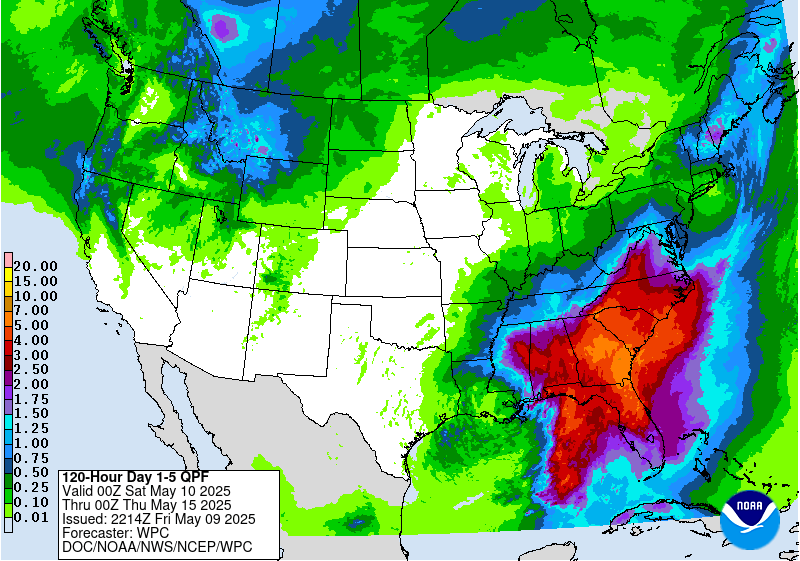
Ski SnowReports
New Feature – Ski Reports. It is difficult to find reports that auto-update on-screen (and they are very long) but these links will get you to them – If you have additional suggestions make them in the comments section after every Econcurrents Article and we may add those links. We will try to not have too much overlap as that can add to the confusion.
Snow Forecasts. And remember this shows natural snow. Ski resorts also make their own snow.
Day 1
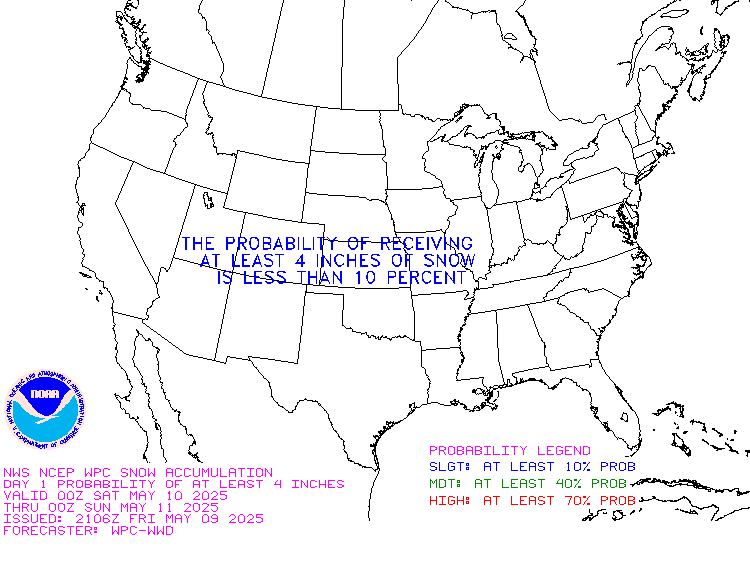
Day 2
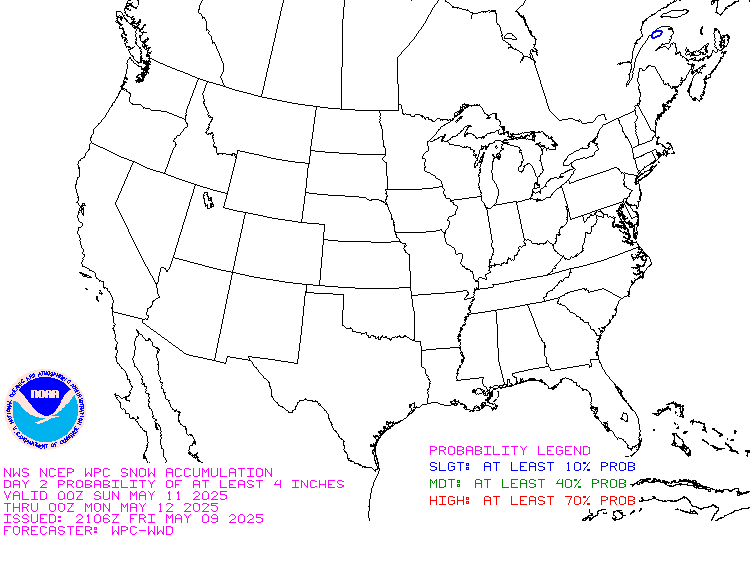
Additional snow information can be found here, here, here, and here. The second link provides animations.
Now we look at Intermediate-Term “Outlook” maps for three time periods. Days 6 – 10, Days 8 – 14, and Weeks 3 and 4. An outlook differs from a forecast based on how NOAA uses these terms in that an “outlook” presents information as deviation from normal and the likelihood of these deviations.
Below are the links to obtain updates and additional information. They are particularly useful if you happen to be reading this article significantly later than when it was published. I always try to provide readers with the source of the information in my articles. These links may also be useful for those viewing this article on a cell phone or other small screen.
| Days 6 – 10 (shown in Row 1) | Days 8 – 14 (Shown in Row 2) | Weeks 3 and 4 (Shown in Row 3 but updates only on Fridays) |
| https://www.cpc.ncep.noaa. gov/products/predictions/610day/ | https://www.cpc.ncep .noaa.gov/products/predictions/814day/ | https://www.cpc.ncep.noaa.gov/products/predictions/WK34/ |
Showing the actual maps. They should now update automatically. The Week 3 – 4 Outlook only updates on Fridays. So below is what I call the Intermediate-term outlook. On Fridays, it extends out 28 Days. That declines day by day so on Thursday it only looks out 22 days until the next day when the Week 3 – 4 Outlook is updated and this extends the outlook by one additional week.
| 6–
10
|
|
|
| 8–
14 |
|
|
| 3–
4 |
|
|
HAZARDS OUTLOOKS
Click here for the latest complete Day 3 -7 Hazards forecast which updates only on weekdays. Once a week probably Monday or Tuesday I will update the images. I provided the link for readers to get daily updates on weekdays. Use your own judgment to decide if you need to update these images. I update almost all the images Friday Night for the weekend edition of this Weather Report. So normally readers do not need to update these images but if the weather is changing quickly you may want to.
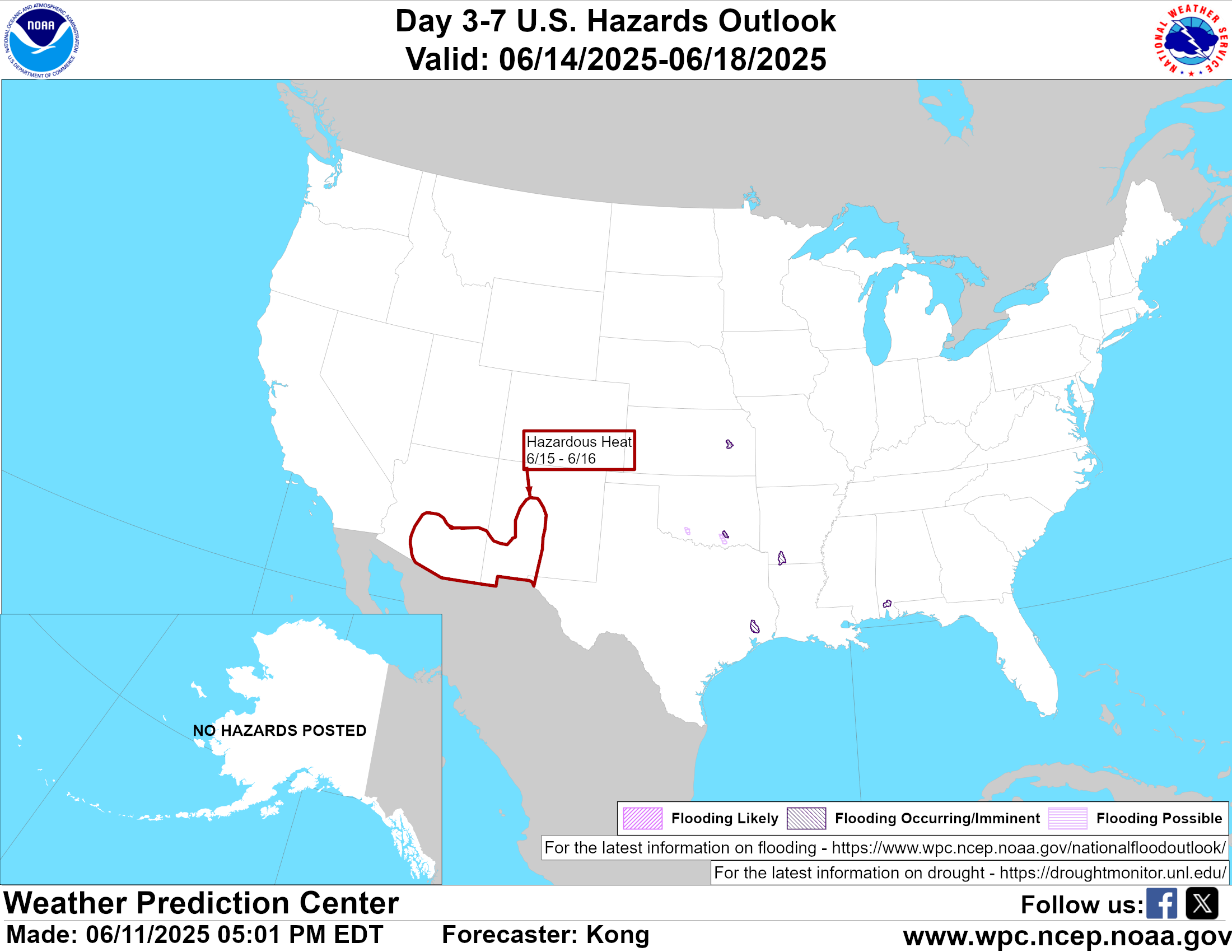
Temperature month to date can be found at https://hprcc.unl.edu/products/maps/acis/MonthTDeptUS.png
Precipitation month to date can be found at https://hprcc.unl.edu/products/maps/acis /MonthPNormUS.png
World Forecast [that website is has been intermittent so be patient]
Below are the Day 1 -3 and 4-6 forecasts for temperature and precipitation. Updates and much additional information can be obtained HERE
World Temperature Anomalies

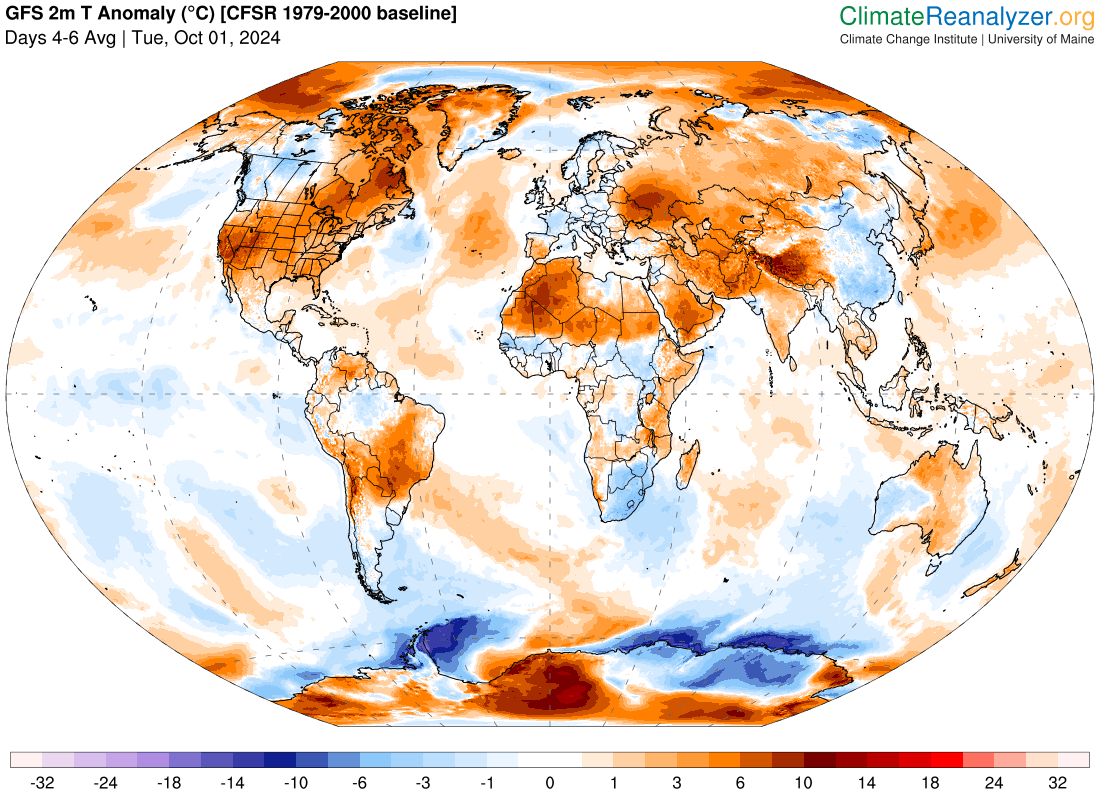
World Accumulated Precipitation
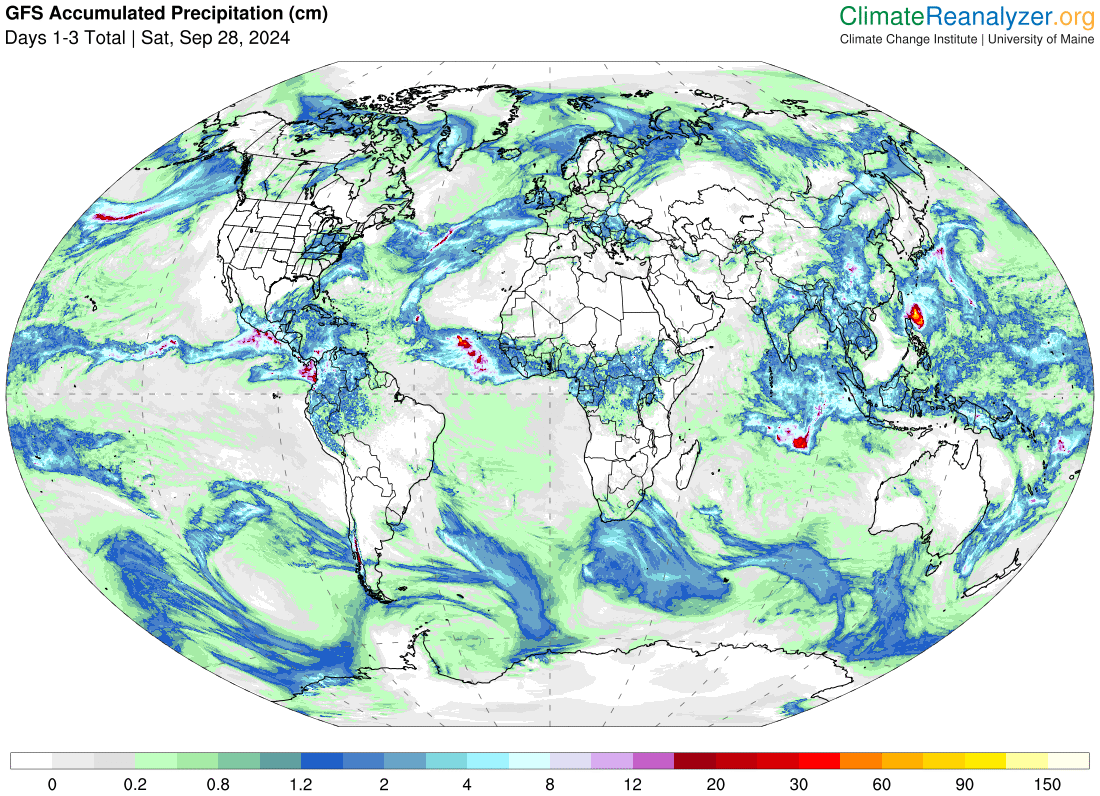

This information is provided by the University of Maine. They draw upon many different sources. There is a lot of information available at the link provided. I have just provided two useful forecasts. There are probably over a hundred different forecasts available from this source.
Worldwide Tropical Forecast (This is a NOAA Product)
This graphic updates on Tuesdays) If it has not been updated, you can get the update by clicking here Readers will only have to do that if they are reading this article much later than the date of it being published.
Information on Tropical Storms can be found HERE. Western Pacific information can be found HERE. Note that unless there is an out-of-season storm the below images will not update until the National Hurricane Center starts their seasonal update of these maps on June 1. I include them simply because there can be an out-of-season event in which case it should show up in these maps.


–
| I hope you found this article interesting and useful. |
–

